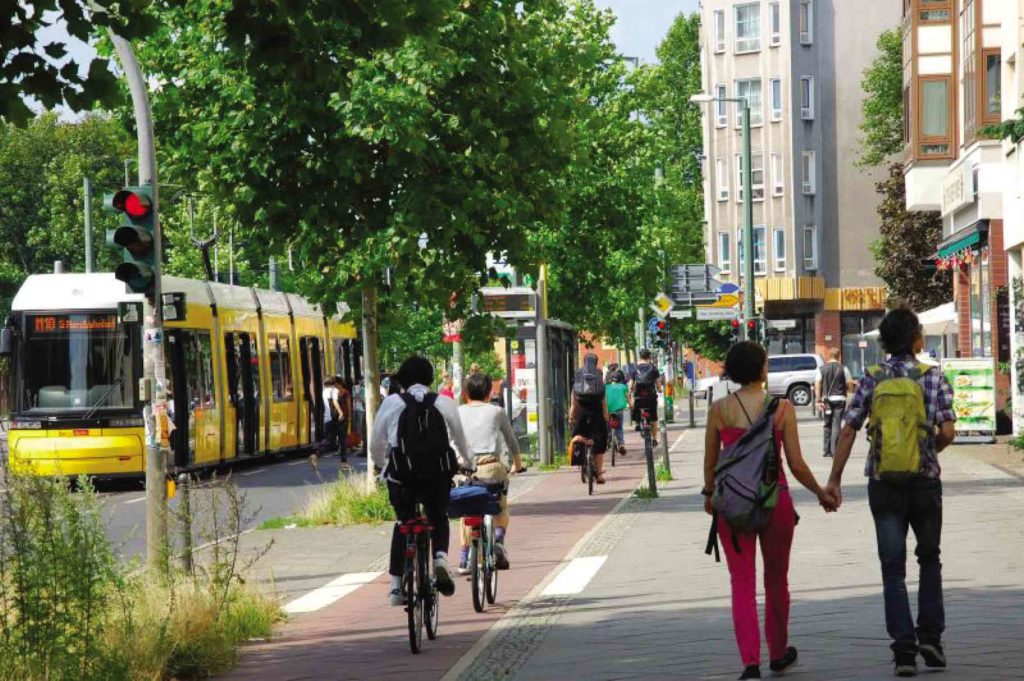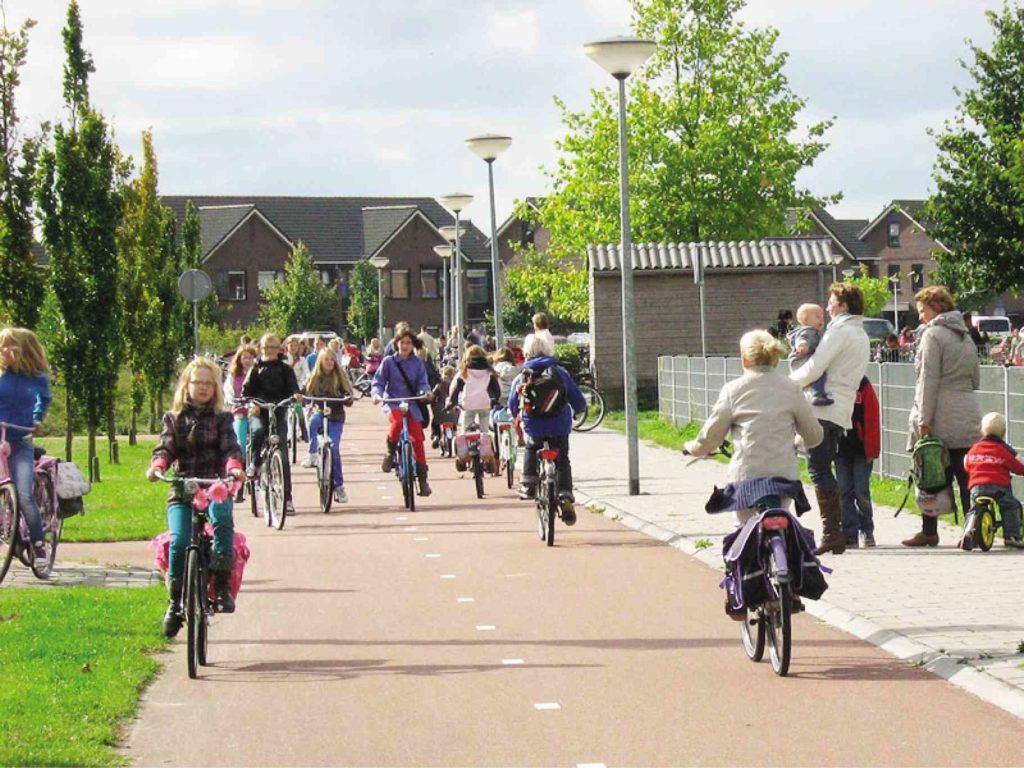
Citizens have a role to play in watching how developers design residential spaces—these should encourage walkability, convenience, and access to our needs. Source: wglt.org
What does our everyday routine feel like? How long does it take us to go to and from our work place? How do we describe a typical experience from the house to the market, the kids’ school, or the church?
Many would answer how they drive around, or take Uber to traverse those many kilometers, having to work outside their home cities.
Or some would say they commute, but with unease, maybe even anxiety, because of the long waiting lines for public transport, or the punishing traffic situation, or the inevitable heat.

Residential areas should encourage safe, open spaces for children and adults. Source: departmentfortransport.wordpress.com
Human-scale neighborhoods
A citizen’s way of life is greatly affected by everyday’s routine and space. A pleasant, comfortable commute may set the tone of one’s day, and in the long term, overall productivity.
Being threatened by zooming motorcycles (or trucks) in one’s walking space, having to bear cracks and hazards on concrete, and being burdened by too far a workplace can affect us negatively, and worse than how we perceive these problems to be.
American architect Clarence Perry looked into these issues, and stressed how important human-scale neighborhoods are in the greater urban lattice, because it is in smaller-scale communities where we get to shape the people’s daily experience.
Perry introduced what we call the neighborhood unit. He was looking into designs and observed how families with children would choose homes closer to a school. He suggested how neighborhoods should have principles, such as on the safety of pedestrians which can be met by separating local streets from the arterial roads, putting schools as a center of a community, and encouraging social, and open space for both children and adults.
The neighborhood unit encourages a five-minute walk for our daily activities. Source: thecityecosystem.com
Accessibility
An important aspect that the neighborhood unit introduced to urban development is accessibility.
People can move to and from where they need to go within a five-minute walk. This provides ease, security, and comfort to residents because of the familiarity and proximity of environment.
Let us revisit our daily routine. How much have our residential vicinities resembled the neighborhood unit? How much have our private developer groups considered our social needs, when they built our subdivisions and town houses? Do we find it comfortable and secure to walk from our homes to shopping centers?
While it is costly and admittedly quite difficult to immediately address or correct how many of our residential areas were designed, zoned, and built, citizens still have ways to encourage better residential spaces.
Looking into neighborhood matters, closely watching the planning and implementation activities of our cities’ urban development, and encouraging these guiding principles will eventually lead to spaces that could better cater to our personal and community needs.
The author is an environmental planner. She champions better urban management and civic engagement in the country.

